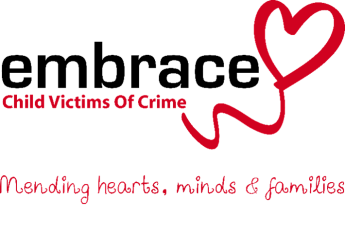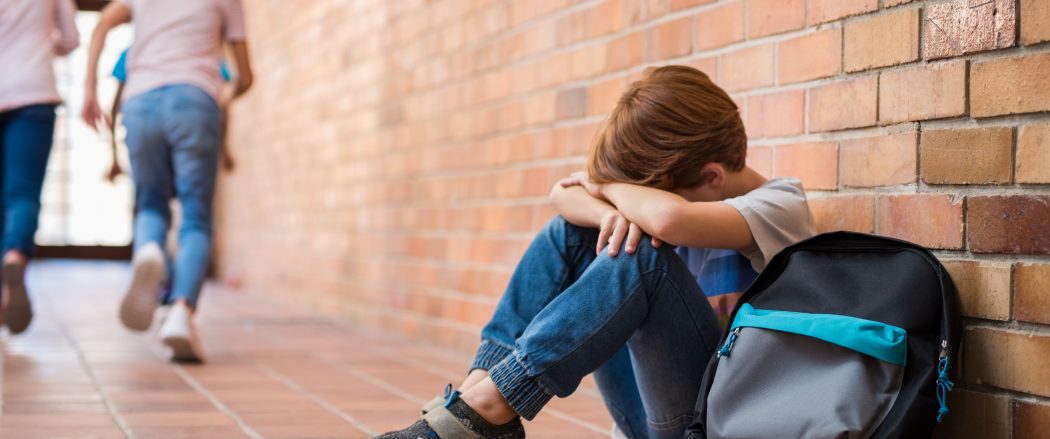To nurture the skills of resilience is key to providing young people with the ability to cope with stress, adversity, failure and challenges. Resilience is evident when young people have a greater ability to “bounce back” when faced with difficulties and achieve positive outcomes.
Resilience enables an individual to identify when a relationship feels unsafe, threatening or uncomfortable and provides the confidence and self-belief to persist in raising and reporting a concern. It also enables an individual to support others who are victims of domestic abuse and direct them to appropriate support services.
For over 35 years, Women’s Aid’s has been working to prevent domestic and sexual violence and to ensure the safety of abused women and children. A key element of its work has been to engage directly with children and young people to promote safe, violence-free family relationships.
The Expect Respect Education Toolkit has been developed by Women’s Aid following its initial launch in 2010 as part of a Home Office campaign to address teenage relationship abuse. With funding from the Body Shop, Women’s Aid has had the opportunity to work with teachers over the years to develop resources for work with children and young people in schools. As a result, the current toolkit consists of one easy to use “Core” lesson for each year group from reception to year 13 and is based on themes that have been found to be effective in tackling domestic abuse. These resources can be accessed below and are designed to improve the responses of those affected by domestic abuse as well as prevent domestic abuse in the future.
The Issue locally and nationally
Domestic Abuse is a crime and a major social problem affecting many families. In 90% of reported domestic violence incidents, children have either been present in the same or a nearby room.
According to the Crime Survey for England and Wales (CSEW) year ending March 2019:
- an estimated 7.5% of women (1.6 million) and 3.8% of men (786,000) experienced domestic abuse in the last year
- women aged 20 to 24 years were more likely to be victims of any domestic abuse in the last year than women aged 25 years and over
- adults who were separated or divorced were more likely to have experienced domestic abuse compared with those who were married or civil partnered, cohabiting, single or widowed
- adults who lived in urban areas were more likely to have experienced domestic abuse in the last year (6.0%) than those who lived in rural areas (4.2%)
In 75% of the domestic abuse-related crimes recorded by the police in the year ending March 2019, the victim was female.
Between the year ending March 2016 and the year ending March 2018, 74% of victims of domestic homicide were female compared with 13% of victims of non-domestic homicide.
In 2019 Cambridgeshire Police received 7979 reported domestic abuse related incidents/crimes (ONS.gov.uk)
Research has shown that there is wide acceptance of abuse among young people in the UK:
- 45% of teenagers believe that, in some circumstances, it is acceptable for a boy to assault his girlfriend.
- one in five teenage girls has been hit by a boyfriend, and one third say cheating justifies violence.
- there is a clear link between girls experiencing domestic violence in the home and then later experiencing abuse by boyfriends.
- a small-scale local study found that all participants had knowledge of friends or other young people who had experienced emotional or physical harm from a partner.
- Domestic violence may teach children to use violence
- Violence can affect children in serious and long-lasting ways
- Where there is domestic violence there is often child abuse
- Children will often blame themselves for domestic violence
- Alcohol misuse is very common contributing factor when violence occurs in families
- Pregnant women are more vulnerable to domestic violence.
Children, who witness, intervene or hear incidents are affected in many ways. What can be guaranteed is that children do hear, they do see and they are aware of abuse in the family. Children will learn how to behave from examples parents set for them. Domestic violence teaches children negative things about relationships and how to deal with people. For instance:
- It can teach them that violence is an acceptable way to resolve conflict
- They learn how to keep secrets
- They learn to mistrust those close to them and that children are responsible and to blame for violence, especially if violence erupts after an argument about the children.
Many people find it difficult to understand why people remain in or return to abusive violent situations. A combination of fear, love, the risk of homelessness and financial issues can make it very difficult for partners with children to leave and some may not want to.
What is known to work
Research has demonstrated that, not only is it perfectly possible to talk to children and young people about interpersonal and domestic violence, but also that there is a great need to do so.
This is because children and young people are confused about the issue and want to learn more and because those children and young people who have lived with violence, or are living with it, want to talk about it and make sense of their experiences.
For all children and young people, whether or not they have lived with violence, peers and emerge as an important source of support. Children and young people often find it easier to talk to their friends than to adults and discussing the issues together may be their favoured way of learning.’
Silence is not always golden, Tackling Domestic Violence, National Union of Teachers 2005
Key Actions for schools to take:
- Schools have a number of legal responsibilities towards the young people in their care, in terms of keeping them safe from harm and for their social and moral development.
- School is where children learn how to interact with others and work together.
- Schools can help children grow up with the understanding that no one should be abused
- (Through work on PSHE, Citizenship and other approaches such as SEAL).
- Schools can help to tackle beliefs and attitudes about gender and power, which, if unchallenged, may lead to abusive behaviour.
- School may be the one safe haven for children coping with domestic abuse, providing stability and support.
Teacher Guidance
Before carrying out each lesson, it is recommended that teachers ensure that they themselves understand domestic abuse and its impact. This could be achieved by:
- attending a short training course – this could be a one hour slot on a teacher inset day or a one day course provided by a local domestic violence service or co-ordinator;
- reading some literature about domestic abuse
- visiting Women’s Aid’s websites
www.womensaid.org.uk or
www.thehideout.org.uk
As a bare minimum, teachers should ensure that they fully read this introduction to the Expect Respect Educational Toolkit.
It is possible that a child or young person might disclose that they themselves are experiencing domestic abuse at home. It is vital that this is not dismissed, so the teacher should be prepared beforehand for how she or he can respond to such a disclosure. It will also be helpful to know what services exist locally to support those affected by domestic abuse.
Finally, it is important to acknowledge that teachers themselves may be affected by domestic abuse, either directly or otherwise. If this is the case, they may want to consider whether they are able to manage facilitating the lesson at this time.
By the end of Primary School pupils should know:
There are some aspects of education about safeguarding which are statutory as part of the Relationships Education and Health Education Guidance:
- how to recognise who to trust and who not to trust, how to judge when a friendship is making them feel unhappy or uncomfortable, managing conflict, how to manage these situations and how to seek help or advice from others, if needed.
- about the concept of privacy and the implications of it for both children and adults; including that it is not always right to keep secrets if they relate to being safe.
- that each person’s body belongs to them, and the differences between appropriate and inappropriate or unsafe physical, and other, contact.
- how to recognise and report feelings of being unsafe or feeling bad about any adult.
- how to ask for advice or help for themselves or others, and to keep trying until they are heard.
- how to report concerns or abuse, and the vocabulary and confidence needed to do so.
- where to get advice e.g. family, school and/or other sources.
- how to make a clear and efficient call to emergency services if necessary.
- concepts of basic first-aid, for example dealing with common injuries, including head injuries.
Source: Relationships Education RSE and Health Education (DfE) Relationships Education, Relationships and Sex Education and Health Education guidance (publishing.service.gov.uk)
By the end of Secondary School pupils should know:
- the characteristics of positive and healthy friendships (in all contexts, including online) including: trust, respect, honesty, kindness, generosity, boundaries, privacy, consent and the management of conflict, reconciliation and ending relationships. This includes different (non-sexual) types of relationship.
- how to: determine whether other children, adults or sources of information are trustworthy: judge when a family, friend, intimate or other relationship is unsafe (and to recognise this in others’ relationships); and, how to seek help or advice, including reporting concerns about others, if needed.
- that some types of behaviour within relationships are criminal, including violent behaviour and coercive control.
- what constitutes sexual harassment and sexual violence and why these are always unacceptable.
- the legal rights and responsibilities regarding equality (particularly with reference to the protected characteristics as defined in the Equality Act 2010) and that everyone is unique and equal.
- the concepts of, and laws relating to, sexual consent, sexual exploitation, abuse, grooming, coercion, harassment, rape, domestic abuse, forced marriage, honour-based violence and FGM, and how these can affect current and future relationships.
- how to identify harmful behaviours online (including bullying, abuse or harassment) and how to report, or find support, if they have been affected by those behaviours.
- basic treatment for common injuries.
- life-saving skills, including how to administer CPR
- the purpose of defibrillators and when one might be needed.
Source: Relationships Education RSE and Health Education (DfE) Relationships Education, Relationships and Sex Education and Health Education guidance (publishing.service.gov.uk)
Local Support

Embrace Child Victims Of Crime
Helping young crime victims and witnesses recover from trauma Embrace Child Victims Of Crime is a specialist support service for young victims and witnesses to crime on behalf of the Police and Crime Commissioner for Cambridgeshire and Peterborough. The aim of the Cambridgeshire-based charity is to help children, young people, and families from all over
Read More About Embrace Child Victims Of Crime


